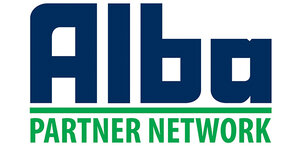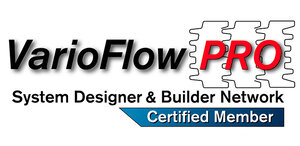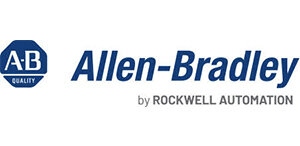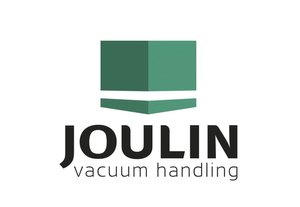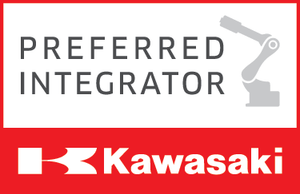Once you have decided that your department and company will benefit from employing a robotic palletizer to automatically stack your boxes, bags or buckets, then comes the next hurdle: convincing your boss to make the investment. This article is intended to help you get ready to exactly that.
The benefits of owning robotic palletizers are many-some are obvious, some perhaps not so. Consider taking the following steps when making your case (for your self first!) that you company would reap a benefit.
1. Clearly identify the problem to be solved. Are you having a quality issue, a labor issue, or a production speed issue? Is it all 3 or something else?
2. Quantify the cost of the problem. Calculate the cost of labor and re-hiring, lost production, damaged product losses, etc. Once this is established, you have a basis for the VALUE a robot would be to your organization. Ultimately, this will lead to a ‘Break-even’ analysis, followed by a ‘Return on Investment’ analysis that management will conduct to determine how the robotic automation will benefit the company financially. Cot items to consider include:
- Direct labor cost- hourly wages PLUS benefits for the year.
- Management cost. A portion of managers time, HR time and overhead play into the cost of that worker. Add 20%.
- Retention: Palletizing is a physically demanding job- most people don’t stay. How much does a re-hire cost?
- Lost labor. There are instances where worker sot palletize walk off the job or do not show up as expected. What is this cost?
- Damaged goods. Improperly stacked products on a pallet can lead to crushing, tipping, and truck damage. Can this be quantified with a cost?
- Injury prevention: Very important to a company’s goals, but difficult to put a number on. If there has been an injury due to manual palletizing, perhaps there are records of cost that can be referenced.
- Increased production. Calculate the value of the current products that can be produced in a day manually, and the value that can be achieved with robotic automation. Add the value to your analysis.
3. Identify that the robotic palletizer can solve the problem. Conduct some technical research to see if others are using robots to accomplish the same or very similar job. For example, if your application is stacking concrete bags at a high rate, have other companies had success with robots? Of course, YouTube University is a great place to start conducting this research. Make some phone calls to find out if the users got what they hoped for.
4. Find out if the robotic palletizer fits your application. You will need to know if one or more robots might be required due to your product rates, case or bag sizes and composition, products weights, production line(s) locations, etc. Often it is best to seek the assistance of a qualified engineering company that is a robotic systems integrator to help conduct such an analysis. Robotic integrators will offer this service for free.
5. Determine if the robotic palletizer fit your building. Many robotic system suppliers have standard drawings for several different robotic cell configurations. You can ask them to provide you with the rough overall dimensions and height clearances, or perhaps even provide them with your building drawings in electronic format, and they will insert their robot cell into your drawings. Don’t forget about ceiling clearance and ground access traffic requirements.
6. Get some preliminary quotes. You can contact a few robotic systems providers and get comparable proposal to consider.
7. Conduct your own break-even and Return on Investment analysis.
8. Consider alternative funding methods: Does acquiring this robotic palletizer have to be a lump-sum capital outlay for management? Not, it does not, as there are several alternative financing methoids.
- Capital equipment lease: Typical lease finance available through many avenues (more)
- Equipment financing: (More….)
- Rental- “Robots As a Service” (RAAS): This relatively new “Pay- as-you-play” business model is rapidly gaining popularity in the automation world. The RAAS company make the purchase of your specifically design robotic palletizer, and then leases it to you on an “As Used” hourly basis. There is a basic monthly fee, and then and hourly fee for how much the robot is used. The RAAS company has remote monitoring capability, and the only bill you for the hours the robot is used.
9. Consider all other benefits or the robotic palletizer: Develop strong case for safety, speed, elevating of worker satisfaction by eliminating dull dirty and dangerous jobs. High quality robots are long-term, designed for a 20-year work life. Understand that this is a highly proven technology with over 40 years of domination in the automotive manufacturing industry- worldwide! Bolster your own confidence in robotics with some research.
10. Present to your boss fully prepared. Powerpoint or spreadsheets. Make it easy and powerful, include photos and sketches.
When you are ready to make the pitch to your boss, give us a call to confirm your numbers. With hundreds of robot palletizer automation installations, TransAutomation Technologies can help decrease your costs and increase efficiencies in your plant.
Call our Applications Engineering Department at 714.881.4988 or email us at info@transautotech.com
OUR PARTNERS
